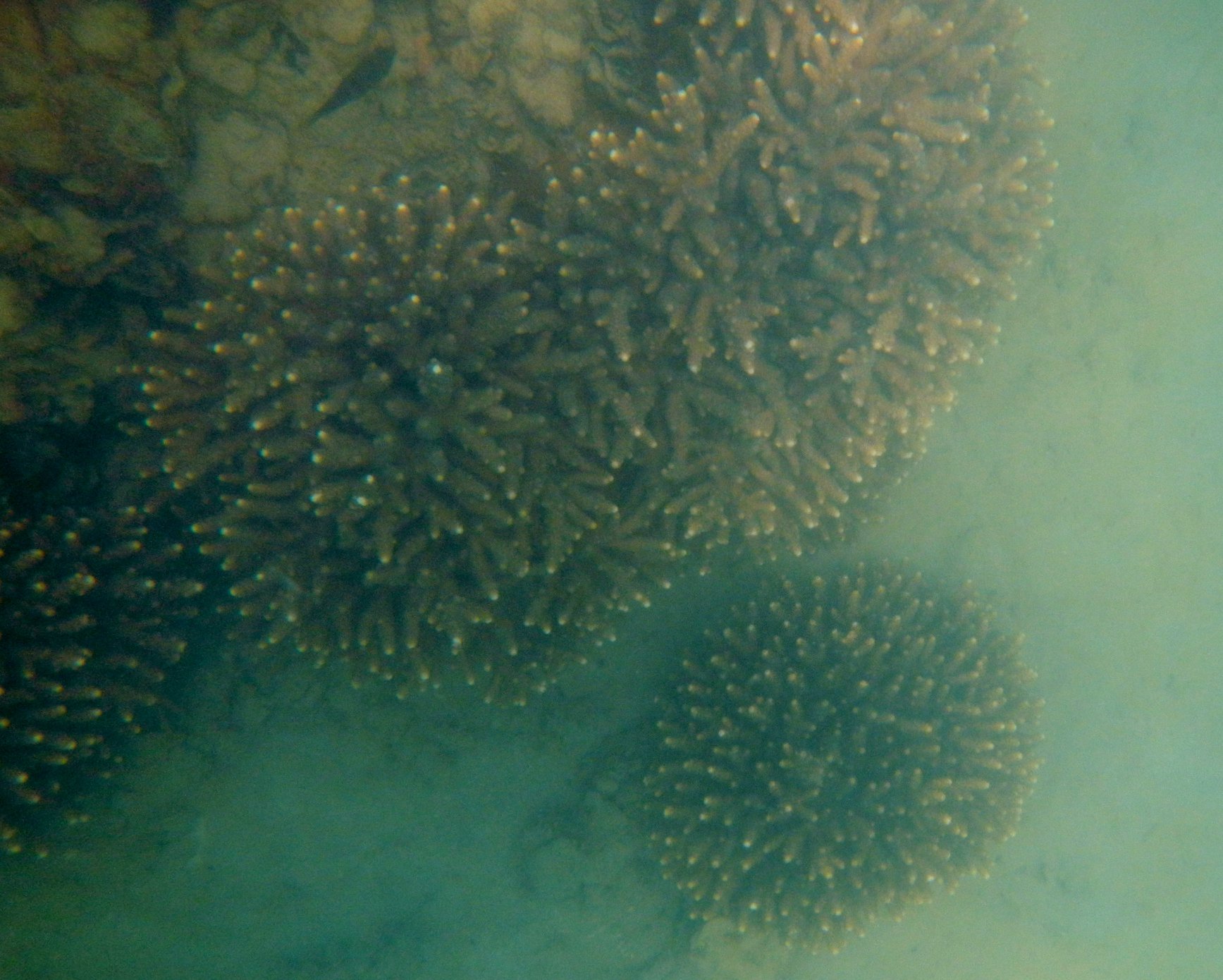|
|
Hard branching coral on unconsolidated substrate in shallow to deep waterShort descriptionSubtidal coral ecosystems in shallow to deep water on unconsolidated substrates, dominated by branching hard corals. Disclaimer: Ecosystem type descriptions are based on biophysical attributes identified in Central Queensland through expert advice and supported by scientific literature. Not all ecosystem types are mapped based on current inventory, and many of the ecosystems described here may also occur in other parts of Queensland.
Classification categoriesSelect from the links below to view related ecosystem type categories Long descriptionSubtidal branching hard corals in shallow (0 to 10 metres) to deep water (10 to 30 metres) on unconsolidated or intermediate substrates including boulder, gravel (i.e. cobble and pebble), sand, mud and/or coffee rock. This ecosystem resembles undifferentiated coral on unconsolidated substrate in shallow to deep water (type 94), except that it is a branching form starting to create the beginnings of a calcareous framework, and branching corals create a significant framework for fringing reefs[7]. Depending on whether branching corals, non-branching hard corals or octocorallians* are dominant, this ecosystem may switch back and forth between types 86 (non-branching on unconsolidated), 94 (undifferentiated coral on unconsolidated) and 70 (hard undifferentiated on unconsolidated) and not be a distinct ecosystem in itself. Coral rubble and corals on unconsolidated substrates can be cemented together by crustose coralline algae (see type 58), preventing it from being swept away by storms and cyclones[2] Refer to type 70 (undifferentiated corals on unconsolidated) for comments concerning the origin of many Great Barrier Reef fringing reefs on unconsolidated sediments[7]. *Octocorallia is a subclass of the class Anthozoa in the phylum Cnidaria, and include soft corals, gorgonians, sea whips, sea pens, sea fans and octocorals. Like some of the many other anthozoans, octocorallians are sessile polyp-bearing animals with a mobile larval phase. Octocorallians are distinguished by the eight (i.e. octo) tentacles in each polyp. Most octocorallians do not deposit a rigid calcium carbonate exoskeleton, and therefore tend to attach to reefs rather than contribute to reefal frameworks as per the reef building Scleractinian (hard) corals[4]. Special valuesThe values of Queensland’s coral reefs are internationally recognised in the World Heritage and Ramsar conventions. The Outstanding Universal Value of the Great Barrier Reef World Heritage area is based on four criteria (vii), (viii), (ix), (x). The Ramsar convention also includes coral reefs as one of its wetland types which make up part of a site’s ecological character (a combination of the ecosystem components, processes and services of the wetland). The Great Sandy Strait Ramsar wetland also includes coral reefs (e.g. Woody and Round Island reefs, coral communities at Little Woody Island, and soft corals on coffee rock reefs). Shoalwater and Corio Bays Ramsar wetland and the Moreton Bay Ramsar wetland also includes fringing coral reefs. Branching hard corals growing on unconsolidated substrates provide the beginnings of calcareous reefal framework at a finer scale, providing structure for the attachment of other flora and fauna, e.g. sponges, other invertebrates, macroalgae etc., and providing rugose shelter and food for corallivorous fish (e.g. angelfish) or algal farmers such as damselfish. Corally, gravelly, rubbly substrates can be productive areas for gastropod molluscs (e.g. cowries, cones and murex). Diagnostic attributesInundation 'Subtidal' Benthic depth 'Shallow (0-10m)', 'Deep (10-30m)' Structural macrobiota 'Hard coral – branching' Consolidation 'Unconsolidated', 'Intermediate', 'Unknown' QualifiersThe Cover qualifier is relevant to any coral ecosystem as live coral percentage cover is an essential indicator used in coral monitoring. See monitoring links in type 90. Potentially Naturalness qualifiers are relevant. Being able to be shifted by mechanical action means that these ecosystems can be potentially modified by trawling or dredging. DistributionPotentially found in clearer waters with sand and rubble shoals where coral growth could potentially ‘turn-on’. Branching corals such as Acropora spp. tend to be sensitive to water clarity and other attributes associated with water quality (nutrients, sedimentation and suspended solids) which can deter coral larvae (planula) from settling and disrupt or smother newly settled corals. Generally there will be more settlement of branching corals where there is a good supply of planktonic larvae and understanding the source of the larvae and how the currents disperse them is important[3]. The following relates to distribution of this ecosystem type within the Central Queensland mapping area:
CommentsRelevant other attributes include Water clarity and Energy magnitude. Branching corals can tolerate a degree of wave action, although on unconsolidated substrates this may lead to dislodgement. Benthic rugosity of coral reefs, particularly branching corals, is important for creating three-dimensional living space for biota including fish, and allowing more shading which can protect corals during bleaching events[6]. Water temperature is critical to all corals as they are sensitive to extremes of heat and cold, resulting in bleaching due to the loss of endosymbiotic dinoflagellates (e.g. zooxanthellae) and therefore the ability to photosynthesise[5]. Additional InformationProtecting the Great Barrier Reef - Queensland Government Coral - Department of Environment, Science and Innovation Coral reefs - Queensland Museum The Reef - Great Barrier Reef Marine Park Authority Nationally (DIWA) and internationally important (Ramsar) wetlands - WetlandInfo Coral Indicators for the 2017 Gladstone Harbour Report Card - Australian Institute of Marine Science Reef Report Card 2016 - Queensland Government Great Barrier Reef Outlook Report - Great Barrier Reef Marine Park Authority Monitoring inshore reefs - Australian Institute of Marine Science Reef Check Methods - Reef Check Australia Coral reefs - Museum of Tropical Queensland Remote Sensing Research Centre - The University of Queensland References
Last updated: 12 July 2019 This page should be cited as: Department of Environment, Science and Innovation, Queensland (2019) Hard branching coral on unconsolidated substrate in shallow to deep water, WetlandInfo website, accessed 30 August 2024. Available at: https://wetlandinfo.des.qld.gov.au/wetlands/ecology/aquatic-ecosystems-natural/estuarine-marine/descriptions/78/ |

 — Department of Environment, Science and Innovation
— Department of Environment, Science and Innovation


